American Institute in Taiwan
Notice of Funding Opportunity
Funding Opportunity Number: AIT2021200-002
Deadline for Applications: Friday, April 12, 2021
Total Amount Available: Up to $24,500 USD
A. PROGRAM DESCRIPTION
The American Institute in Taiwan (AIT) is seeking implementation proposals for outreach engagements entitled as “Inspiring Women Entrepreneurs in Rural Taiwan (IWE)” that complement its current State Department-funded program entitled “Academy for Women Entrepreneurs (AWE) Taiwan Program 2021”.
The IWE program is funded by the AIT and aligns with the White House-led Women’s Global Development and Prosperity (W-GDP) Initiative, which is designed to empower at least 50 million women worldwide by 2025 to fulfill their economic potential, and in doing so, create conditions for increased stability, security, and prosperity for all.
An IWE proposal will be designed for a Chinese version of AWE by referencing the content of DreamBuilder, a massive open online course (MOOC) that focuses on women’s entrepreneurship. Additionally, women will participate in a series of extracurricular events, such as seminars, workshops, business accelerators, speed mentoring, business clinics, pitch competitions, and final presentations. Participants will engage in facilitated lessons on business management and network with like-minded entrepreneurs and mentors in their regions and the United States.
See Appendix I for DreamBuilder Table of Content
Program Objectives:
• Provide women entrepreneurs in rural areas of Taiwan with engaging, customized, practical business and entrepreneurship training. Effective programs will utilize an interactive curriculum, hands-on activities, and subject matter experts, including AIT exchange program alumni, local women business leaders, or other local partners.•
• Foster networks that support participants’ access to peer-to-peer mentorships, business partners, and scaling opportunities in the region and the United States
• Connect women through a wide range of existing programs tailored to women’s economic empowerment to expand the effects of participation.
Participants and Audiences:
AIT’s award of IWE aims to equips women entrepreneurs in the rural and underserved areas of eastern, southern and/or central Taiwan with the practical skills needed to create sustainable businesses and enterprises.
The implementing individuals or organizations can be from any region of the island, which has resources, network and experiences to effectively engage women entrepreneurs in the referred regions who may not be fluent in English or may not have a background or education in business.
B. FEDERAL AWARD INFORMATION
The program will be carried out between May 2021 and January 2022. The exact start date of the program will be determined by the date of the signature of the grant contract.
Length of performance period: Proposed programs should be completed within a year or less.
Number of awards anticipated: One award
Award amounts: Awards may range from a minimum of $10,000 to a maximum of $24,500
Total available funding: Up to $24,500
Type of Funding: FY21 AIT Public Diplomacy Funds
Anticipated program start date: May 2021
Funding Instrument Type: Standard Grant
C. ELIGILIBITY INFORMATION
1. Eligible Applicants
The following organizations are eligible to apply:
• Not-for-profit organizations, including think tanks and civil society/non-governmental organizations
• Public and private educational institutions
• Individuals
• Public International Organizations and Governmental institutions
2. Eligibility Criteria
• Organizations that have in-depth understanding about small business development in their region and strong relationships with local resources are highly encouraged to apply.
• Applicants should have the ability to translate and transform the DreamBuilder MOOC content to adapt to participants’ experience and understanding of business concepts.
• Applicants must value collaboration. Applicants are encouraged to include other implementing partners in their implementation plan.
• Local NGOs, especially organizations that support indigenous, minority and women business development, will be favorably considered.
• Working with governments is encouraged although governments and government-affiliated entities are not eligible to receive grants directly.
3. Cost Sharing or Matching
Cost sharing and matching fund are not required. AIT encourages grantees to establish collaborative implementing agreements with other organizations.
4. Other Eligibility Requirements
In order to be eligible to receive an award, the selected organization must have a unique entity identifier (Data Universal Numbering System/DUNS number from Dun & Bradstreet), as well as a valid registration on www.SAM.gov.
See Appendix II for information on how to obtain these registrations. Individuals are not required to have a unique entity identifier or be registered in SAM.gov.
Grantees must reveal any conflicts of interest. A conflict of interests may arise in particular as a result of economic interests, political affinities, family or emotional ties, or any other relevant connection or shared interest.
D. APPLICATION AND SUBMISSION INFORMATION
Application forms required below are available here:
*Individual Application Form for Federal Assistance (SF 424)
*Organization form Application for Federal Assistance (SF-424)
*AIT Standard Terms and Conditions
Please follow all instructions below carefully. Proposals that do not meet the requirements of this announcement or fail to comply with the stated requirements will be ineligible.
Content of Application
Please ensure:
• The proposal clearly addresses the goals and objectives of this funding opportunity
• All documents are in English
• All budgets are in U.S. dollars
• All pages are numbered
• All documents are formatted to A4 paper, and
• All Microsoft Word documents are single-spaced, 12 point Times New Roman font, with a minimum of 1-inch margins.
The following documents are required:
1. Mandatory application forms: SF-424 (Application for Federal Assistance – organizations) or SF-424-I (Application for Federal Assistance –individuals)
2. Summary Page: Cover sheet stating the applicant name and organization, proposal date, program title, program period proposed start and end date, and brief purpose of the program.
3. Proposal: The proposal should contain sufficient information that anyone not familiar with it would understand exactly what the applicant wants to do. You may use your own proposal format, but it must include all the items below.
• Proposal Summary: Short narrative that outlines the proposed program, including program objectives and anticipated impact.
• Introduction to the Organization or Individual applying: A description of past and present operations, showing ability to carry out the program, including information on all previous grants from the U.S. Embassy and/or U.S. government agencies.
• Problem Statement: Clear, concise and well-supported statement of the problem to be addressed and why the proposed program is needed.
• Program Goals and Objectives: The “goals” describe what the program is intended to achieve. The “objectives” refer to the intermediate accomplishments on the way to the goals. These should be achievable and measurable.
• Program Methods, Structure and Design: A description of how the program is expected to work to solve the stated problem and achieve the goal. Include a logic model as appropriate.
• Program Activities: Describe the program activities and how they will help achieve the objectives. The deliverables should include a training curriculum in Chinese, based on DreamBuilder’s structure and content, supplemented by Chinese language in-person support, and associated follow-up activities such as mentoring workshops, discussions, proposal clinics, pitch competitions and a final presentation. Extracurricular events such as awareness training workshops, trade fairs, business accelerators, conferences, speed mentoring and more are encouraged.
• Proposed Program Schedule and Timeline: The proposed timeline for the program activities. Include the dates, times, and locations of planned activities and events.
• Key Personnel: Names, titles, roles and experience/qualifications of key personnel involved in the program. What proportion of their time will be used in support of this program? Please include 1-page CV or resume of key personnel who are proposed for the program.
• Program Partners: List the names and type of involvement of key partner organizations and sub-awardees, if applicable, including AIT program alumni, the private sector and other supplementary engagements focused on women’s economic empowerment.
• Participants recruitment: How the program will be staffed and managed, completing timeframe of phases, announcement for workshop participants, and other details. Include (if available) review strategy, timeline, and communication of participant selection.
• Promotional Plan: A promotional plan for an IWE launching event and social media engagement before and during the project.
• Program Monitoring and Evaluation Plan: This is an important part of successful program. A monitoring plan with clear measurable indicators. Templates for updating on project progress, pre- and post- survey for facilitators and workshop participants.
• Budget Plan: The budget can include costs of administration, programming, personnel and speakers, extracurricular engagements, pitch competition, promotion on social media, local transportation, lodging/M&IE for program facilitators, prints of promotional materials and for classroom, supplies, and translation of MOOC content.
• Future Funding or Sustainability: Applicant’s plan for continuing the program beyond the grant period, or the availability of other resources, if applicable.
4. Budget Justification Narrative: Provide a separate sheet of paper to describe each of the budget expenses in detail.
See Appendix III for Guidelines for budget Justification.
5. Submission Dates and Times:
Applications are due no later than close of business April 12, 2021
6. Funding Restrictions:
Alcoholic beverages, contributions to other entities, goods or services for personal use, entertainment activities, and organization operational costs are not allowable budget items.
7. Other Submission Requirements:
All application materials must be submitted by email to grantsubmission@mail.ait.org.tw by email with the subject line starting with: AIT2021200-002_IWE_Name of applicant name or organization
E. APPLICATION REVIEW INFORMATION
Each application will be evaluated and rated on the basis of the evaluation criteria outlined below:
Program Planning/Ability to Achieve Objectives – 25 points: Goals and objectives are clearly stated and program approach is likely to provide maximum impact and achieve goals.
Organizational Capacity and Record on Previous Grants – 20 points: The organization has expertise in its stated field and has the internal controls in place to manage federal funds, including financial management systems.
Budget – 15 points: The budget justification is detailed. Costs are reasonable with no questionable items. The budget is realistic, accounting for all necessary expenses to achieve proposed activities. No food, alcohol or paying for media coverage.
Monitoring and evaluation plan – 10 points: Applicant demonstrates it is able to measure program success against key indicators and provides milestones to indicate progress toward goals outlined in the proposal. The program includes output and outcome indicators, and shows how and when those will be measured.
Sustainability – 10 points: Program activities will continue to have positive impact after the end of the program.
Innovation – 10 points: Program shows innovation in design, audience reached, problem to be solved, or method of solving.
Diversity – 10 points: Program reaches diverse audiences and or includes diverse grantees/implementers, including ethnic, racial, gender and socioeconomic diversity.
Anticipated Announcement and Federal Award Dates: End of April 2021
F. FEDERAL AWARD ADMINISTRATION INFORMATION
1. Federal Award Notices
The grant award will be written, signed, awarded, and administered by the Grants Officer. The assistance award agreement is the authorizing document and it will be provided to the recipient for review and signature by email. The recipient may only start incurring program expenses beginning on the start date shown on the grant award document signed by the Grants Officer.
If a proposal is selected for funding, the AIT has no obligation to provide any additional future funding. Renewal of an award to increase funding or extend the period of performance is at the discretion of the Department of State.
Issuance of this NOFO does not constitute an award commitment on the part of the AIT, nor does it commit AIT to pay for costs incurred in the preparation and submission of proposals. Further, the AIT reserves the right to reject any or all proposals received.
Payment Method: Payment will be made through Electronic Funding Transfer (EFT) and payment frequency will be discussed after the grantee is selected.
2. Administrative and National Policy Requirements
Terms and Conditions: Before submitting an application, applicants should review all the terms and conditions and required certifications which will apply to this award to ensure compliance to AIT regulation.
See Appendix IV for Terms and Conditions.
3. Reporting
Reporting Requirements: Recipients will be required to submit financial reports and program reports. The award document will specify how often these reports must be submitted.
G. FEDERAL AWARDING AGENCY CONTACTS
If you have any questions about the grant application process, please contact: grantsubmission@mail.ait.org.tw
Appendix I – DreamBuilder Table of Content
DreamBuilder is a free, English/Spanish online learning program developed for women who want to start or grow their own small businesses. It provides a step-by-step framework with 13 courses that lead students to develop a personalized business plan. By completing approximately 30 hours of online learning, students learn about planning, marketing, pricing, management, accounting, managing risk, finding funding, and setting goals. No matter the experience level, DreamBuilder can help participants increase their knowledge and business acumen. More than 60,000 participants from 94 countries have participated in DreamBuilder courses.
| Intro | Tell Us About Yourself |
|
Course 1
|
Start Your Dream In this course we will talk about your dream of starting or growing a business. You will learn about some of the challenges that entrepreneurs face, but you will also learn about some of the rewards that entrepreneurship brings. You will also learn how your decision to become an entrepreneur will impact you, your family, and your community. At the end of this course, you will be introduced to the business plan tool that is built into this program, and you will start working on your business plan. |
|
Course 2
|
Exploring Your Dream In this course, you will explore your dream in greater detail. You will learn about the importance of sharing your idea for a business with other people in order to get their feedback. You will also learn about customers and competitors, and you will start to do some market research. |
|
Course 3
|
Planning your Dream In this course, you will learn about business plans and the importance of planning your dream. You will learn about the different components of a business plan, and some of the different purposes a business plan can serve. You will also learn how to effectively use the business plan creation tool that is built into the DreamBuilder program. |
|
Course 4
|
Making your Dream In this course, you will learn about the practical steps involved in creating and running a business. You will identify your business type and think about the steps required to make your product or provide your service. |
|
Course 5
|
Marketing Your Dream In this course, you will learn about marketing. Marketing is all about communicating the value of your product or service to potential customers/stakeholders. You will learn how to identify your target market. You will also learn about the importance of positioning and branding. You will enter a lot of information into your business plan as you start to develop a marketing strategy. |
|
Course 6
|
Pricing Your Dream In this course, you will learn about pricing. You will learn the importance of identifying how much your customer is willing to pay and how much value they are getting from your products or services. You will learn the difference between direct and indirect costs and what to do if your costs are too high. |
|
Course 7
|
Selling Your Dream In this course, you will learn about selling products and services, as well as the importance of selling the idea of your business. You will also learn why people would want to buy from you and how to make sales projections. |
|
Course 8
|
Managing Your Dream In this course, you will learn about business management. This includes the hiring, training, and efficient management of employees as well as the proper management of money. You will learn how to balance your personal time and the time you dedicate to your business while still finding time to plan for the future success of your business. |
|
Course 9
|
Profiting from your Dream In this course, you will learn how to keep track of the money coming in and going out of your business and how to organize your finances into a Profit and Loss Statement. The course also addresses reasons why your business may not be making a profit and what you can do to correct this. Finally, the course explores options for spending / saving your money if your business is profitable. |
|
Course 10
|
Keeping Track of your Dream In this course, you will learn about why it is important to have a system for tracking the money that goes in and out of your business. You will learn about bookkeeping, and you will be introduced to a number of different accounting terms and processes. You will also learn why it’s important to be able to make accurate projections. |
|
Course 11
|
Funding your Dream In this course, you will learn about how to fund your business and the various sources of funding available. The course will help you think about how much money you really need and when you really need it. You will learn how your business plan, contracts, and agreements can all help you to secure funding for your dream. |
|
Course 12
|
Formalizing your Dream In this course, you will learn about the importance of contracts and agreements. You will learn about the importance of choosing an appropriate legal structure for your business. You will also learn why it is important to make sure you are complaint with regulations, and have taken proper measures to deal with risk. |
| Course 13 |
Turning your Dreams into Reality This is the last course of the DreamBuilder program! In this course, we’ll talk about how you can create an Action Plan to guide yourself in your business. We’ll work on setting good goals with timelines you can stick to and we’ll identify the potential challenges you may have that could keep you from reaching these goals. We’ll talk about the people and resources you have around you that could help you overcome any challenges you are faced with. |
Appendix II – Required Registration for Applicant once Selected as a Grantee
All organizations applying for grants (except individuals) must obtain these registrations. All are free of charge:
- Unique entity identifier from Dun & Bradstreet (DUNS number)
- NCAGE/CAGE code
- www.SAM.gov registration
Step 1: Apply for a DUNS number and an NCAGE number (these can be completed simultaneously)
DUNS application: Organizations must have a Data Universal Numbering System (DUNS) number from Dun & Bradstreet. If your organization does not have one already, you may obtain one by calling 1-866-705-5711 or visiting http://fedgov.dnb.com/webform
NCAGE application: Application page here: https://eportal.nspa.nato.int/AC135Public/scage/CageList.aspx
Instructions for the NCAGE application process:
https://eportal.nspa.nato.int/AC135Public/Docs/US%20Instructions%20for%20NSPA%20NCAGE.pdf
For NCAGE help from within the U.S., call 1-888-227-2423
For NCAGE help from outside the U.S., call 1-269-961-7766
Email NCAGE@dlis.dla.mil for any problems in getting an NCAGE code.
Step 2: After receiving the NCAGE Code, proceed to register in SAM.gov by logging onto: https://www.sam.gov. SAM registration must be renewed annually.
Any applicant listed on the Excluded Parties List System (EPLS) in the System for Award Management (SAM) is not eligible to apply for an assistance award in accordance with the OMB guidelines at 2 CFR 180 that implement Executive Orders 12549 (3 CFR, 1986 Comp., p. 189) and 12689 (3 CFR, 1989 Comp., p. 235), “Debarment and Suspension.” Additionally, no entity listed on the EPLS can participate in any activities under an award. All applicants are strongly encouraged to review the EPLS in SAM to ensure that no ineligible entity is included.
Appendix III – Guidelines for Budget Justification
Personnel and Fringe Benefits: Describe the wages, salaries, and benefits of temporary or permanent staff who will be working directly for the applicant on the program, and the percentage of their time that will be spent on the program.
Travel: Estimate the costs of travel and per diem for this program, for program staff, consultants or speakers, and participants/beneficiaries. If the program involves international travel, include a brief statement of justification for that travel.
Equipment: Describe any machinery, furniture, or other personal property that is required for the program, which has a useful life of more than one year (or a life longer than the duration of the program), and costs at least $5,000 per unit.
Supplies: List and describe all the items and materials, including any computer devices, that are needed for the program. If an item costs more than $5,000 per unit, then put it in the budget under Equipment.
Contractual: Describe goods and services that the applicant plans to acquire through a contract with a vendor. Also describe any sub-awards to non-profit partners that will help carry out the program activities.
Other Direct Costs: Describe other costs directly associated with the program, which do not fit in the other categories. For example, shipping costs for materials and equipment or applicable taxes. All “Other” or “Miscellaneous” expenses must be itemized and explained.
Indirect Costs: These are costs that cannot be linked directly to the program activities, such as overhead costs needed to help keep the organization operating. If your organization has a Negotiated Indirect Cost Rate (NICRA) and includes NICRA charges in the budget, attach a copy of your latest NICRA. Organizations that have never had a NICRA may request indirect costs of 10% of the modified total direct costs as defined in 2 CFR 200.68.
“Cost Sharing” refers to contributions from the organization or other entities other than the U.S. Embassy. It also includes in-kind contributions such as volunteers’ time and donated venues.
Alcoholic Beverages: Please note that award funds cannot be used for alcoholic beverages.
APPENDIX IV
TERMS AND CONDITIONS, please see here.


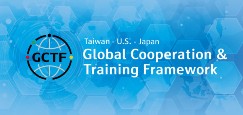




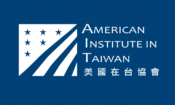
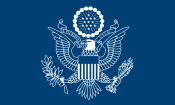
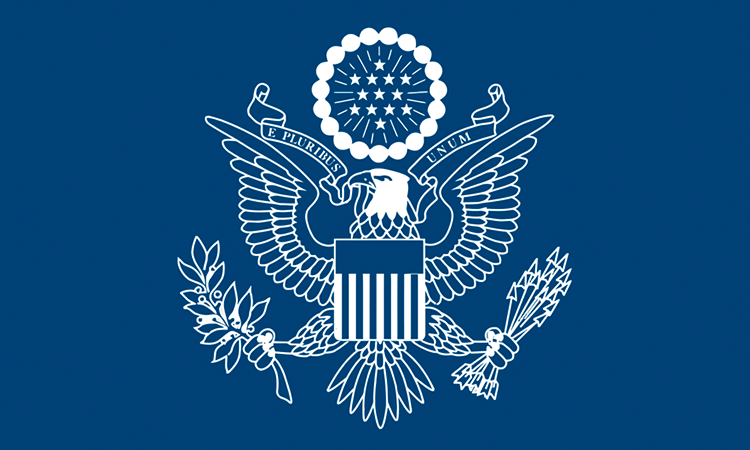
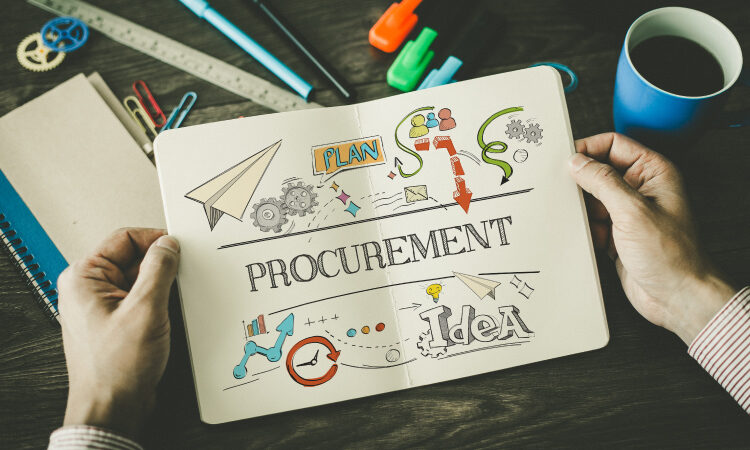




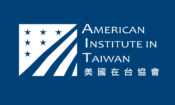
![Video Thumbnail [Recovered]-01](../wp-content/uploads/sites/269/Video-Thumbnail-Recovered-01-1-750x450.jpg)





